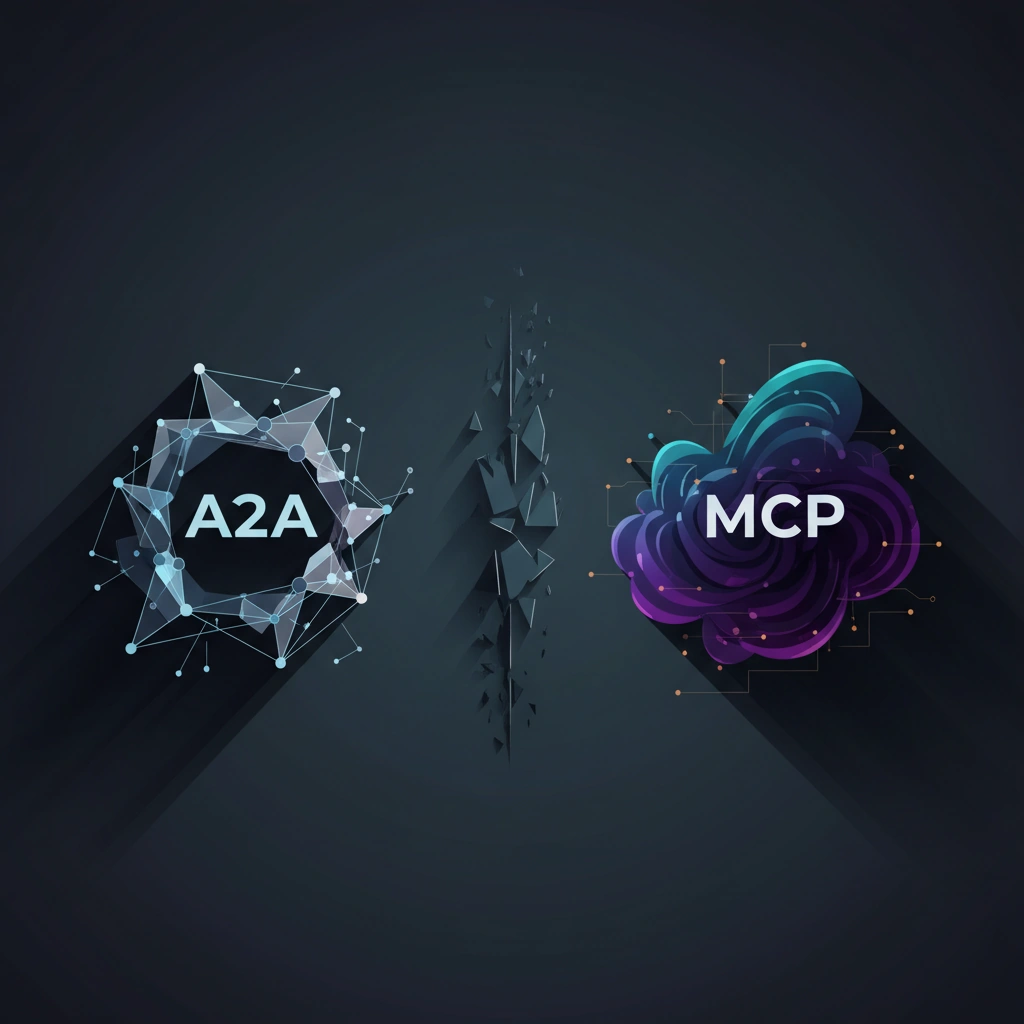A2A vs MCP: Choosing AI Agent Communication Protocols
Deep dive into Agent-to-Agent (A2A) and Model Context Protocol (MCP) for AI agent systems. Technical comparison of architectures, use cases, and implementation strategies for multi-agent coordination.

As AI agent systems evolve from single autonomous units to complex multi-agent ecosystems, the choice of communication protocol becomes critical. Two emerging standards—Agent-to-Agent (A2A) and Model Context Protocol (MCP)—offer distinct approaches to enabling AI agents to coordinate, share information, and collaborate effectively.
Understanding the Architecture Divide
The Agent-to-Agent (A2A) protocol focuses on direct communication between autonomous agents. It establishes a standardized messaging framework where agents can exchange information, delegate tasks, and coordinate actions without centralized control. A2A treats each agent as an independent entity with its own decision-making capabilities, enabling peer-to-peer interactions that scale horizontally.
In contrast, the Model Context Protocol (MCP) emphasizes shared context and state management. Rather than direct agent-to-agent messaging, MCP creates a unified context layer that all agents can access and update. This approach ensures consistency across the system by maintaining a single source of truth for shared information, reducing the risk of conflicting states or duplicate work.
Technical Implementation Differences
A2A implementations typically rely on message queues, publish-subscribe patterns, or direct RPC calls between agents. Each agent maintains its own memory and state, communicating changes through structured messages. This architecture supports asynchronous operations and allows agents to operate independently, making it ideal for distributed systems where network partitions or latency are concerns.
MCP implementations center around a shared context store—often implemented as a vector database, knowledge graph, or distributed cache. Agents read from and write to this central repository, with the protocol handling synchronization, versioning, and conflict resolution. The context layer acts as both a communication medium and a persistent memory system accessible to all agents.
Use Case Analysis
A2A excels in scenarios requiring high autonomy and resilience. Consider a multi-agent system for content moderation where specialized agents handle text, images, and video separately. Each agent can operate independently, passing suspect content to peer agents for specialized analysis. If one agent fails, others continue functioning without disruption. This architecture also suits competitive or negotiation scenarios where agents represent different stakeholders with potentially conflicting objectives.
MCP shines in collaborative workflows requiring tight coordination. For synthetic media generation pipelines—where agents handle script writing, scene generation, voice synthesis, and video assembly—shared context ensures consistency. When the script agent updates character descriptions, all downstream agents immediately access the latest information. This prevents common issues in video generation where visual and audio elements drift out of sync due to stale context.
Performance and Scaling Considerations
A2A systems scale horizontally by adding more agents, but message overhead grows with agent count. With N agents, potential communication paths increase exponentially. Protocol designers address this through hub-and-spoke patterns or hierarchical agent organizations, but careful architecture is required to prevent message storms.
MCP systems face different scaling challenges. The shared context layer becomes a potential bottleneck as agent count increases. However, modern distributed databases and caching strategies mitigate this. The protocol's consistency guarantees—whether eventual consistency or strong consistency—significantly impact performance and must be chosen based on application requirements.
Security and Access Control
Both protocols require robust security models, but their approaches differ. A2A needs agent authentication, message signing, and potentially encryption for sensitive communications. Each agent-to-agent connection represents a trust boundary requiring verification.
MCP centralizes access control at the context layer. Permissions determine which agents can read or write specific context segments. This simplifies security management but requires careful design to prevent privilege escalation or information leakage between agents operating at different trust levels.
Making the Protocol Choice
The decision between A2A and MCP depends on your system's requirements. Choose A2A when:
- Agents need high autonomy and independent operation
- Network reliability is a concern requiring distributed resilience
- Agents represent different stakeholders or security domains
- Asynchronous communication patterns dominate
Choose MCP when:
- Consistency across agents is critical
- Workflows require tight coordination with shared state
- Complex multi-step processes need persistent context
- Agents frequently need access to historical decisions and data
For AI video and synthetic media applications, MCP often provides better foundations due to the need for consistent character models, scene descriptions, and narrative coherence across generation stages. However, hybrid approaches—using A2A for high-level agent coordination and MCP for shared knowledge—are increasingly common in production systems.
Both protocols continue evolving as the AI agent ecosystem matures. Understanding their architectural trade-offs enables developers to build more robust, scalable, and effective multi-agent systems.
Stay informed on AI video and digital authenticity. Follow Skrew AI News.



